Google’s primary goal is to provide searchers with the most useful and relevant information available. To determine the usefulness and relevance of information, the search algorithm relies on a complex set of factors, one of which is dwell time. Dwell time refers to the duration users spend on a webpage before returning to the search engine results page (SERP). This metric becomes a significant signal for Google, indicating the perceived relevance of the content and influencing its ranking.
Understanding how to enhance dwell time and keep visitors engaged on your page is crucial for optimizing your content’s performance in search results. While the algorithm considers numerous factors, focusing on specific writing techniques can positively impact dwell time. It’s important to note that these techniques are effective only when your content aligns perfectly with user search intent.
Understanding Dwell Time
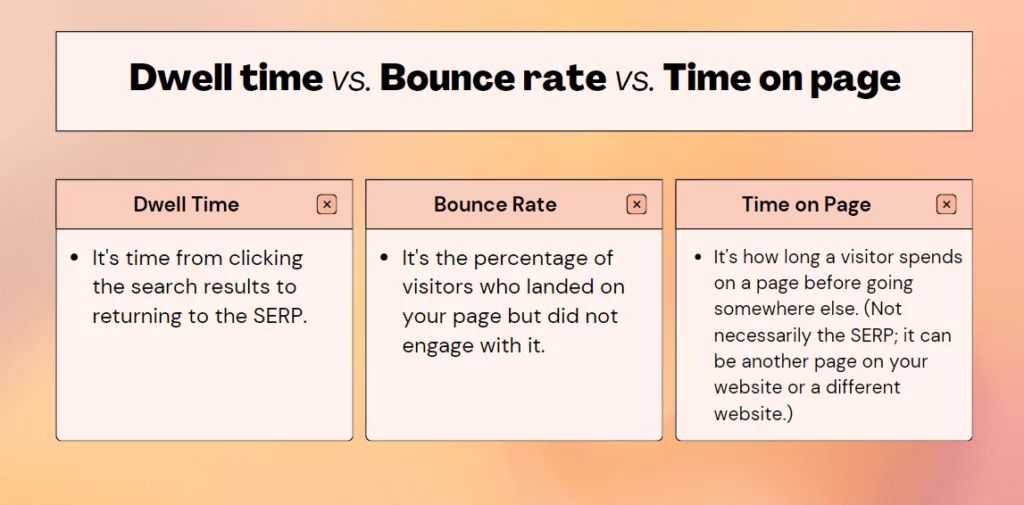
Dwell time measures the duration a user spends on a webpage after clicking a search engine result. It indirectly gauges a webpage’s quality and relevance to a user’s search. A short dwell time suggests unmet needs, while a longer one implies engaging and valuable content.
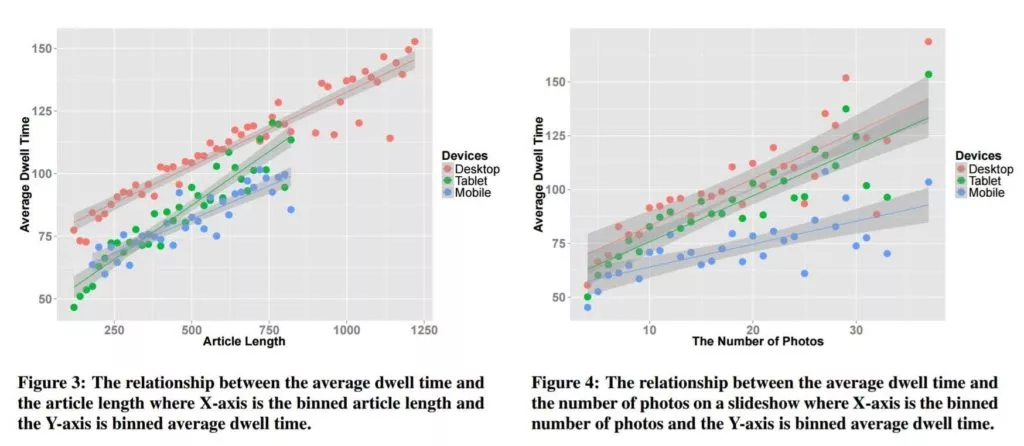
First introduced by Duane Forrester in 2011, dwell time’s impact on rankings is substantial.
Dwell time is a direct reflection of user satisfaction – the longer visitors stay, the more satisfied they likely are with the content.
Strategies to Optimize Dwell Time:
1. Highlighting Content Introductions:
Recognize that contemporary users tend to scan rather than read. After clicking your SERP title, they encounter an introductory segment with three key objectives:
- Capture audience interest to encourage further reading.
- Establish expectations.
- Aid the audience in grasping the content’s value.
Considering online reading is 25% slower than print, it’s essential to make the introduction visually readable and easily digestible. Opt for proven introduction formulas like PAS (Problem, Agitate, Solve), SPY (Short, Pain, Yay), and APP (Agree, Promise, Preview).
- PAS – Problem, Agitate, Solve:
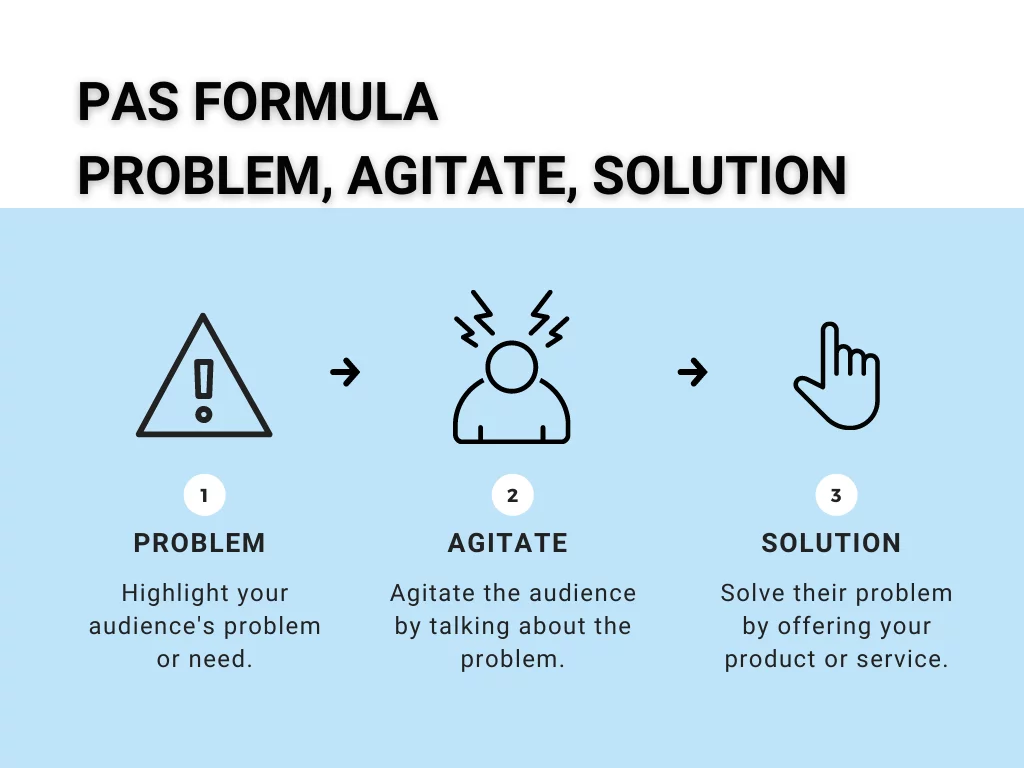
Commence with a problem relevant to your audience’s challenges. Progress to a decision, stirring curiosity for more information. Finally, promise to resolve the problem, providing a brief preview of the content.
- SPY – Short, Pain, Yay:
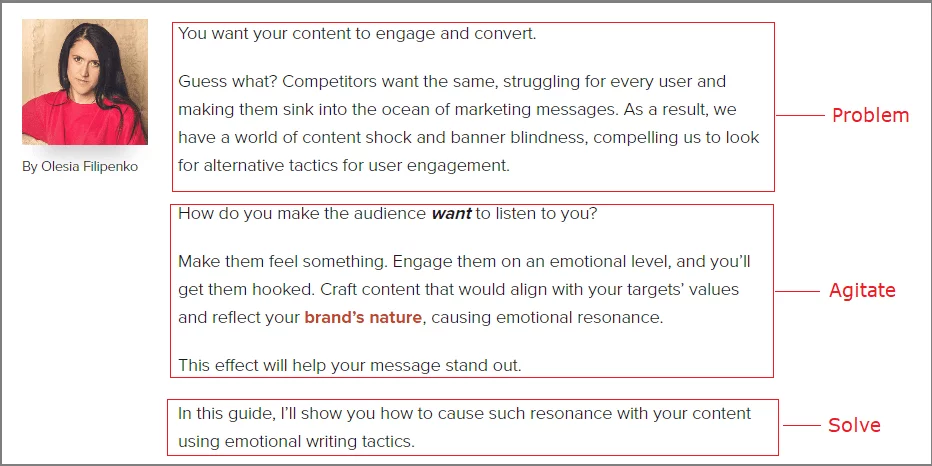
Begin with a concise hook to grab attention. This could be a question, intriguing quote, or controversial statement—something that elicits a positive response. Ensure a connection to your audience’s pain points to evoke sympathy.
- APP – Agree, Promise, Preview:

Devised by Brian Dean (Backlinko), this formula keeps introductions short, direct, and appealing:
- Start with a problem your audience would agree with.
- Promise a solution.
- Preview your content to convey what’s in store.
2. Enhancing Text Readability:
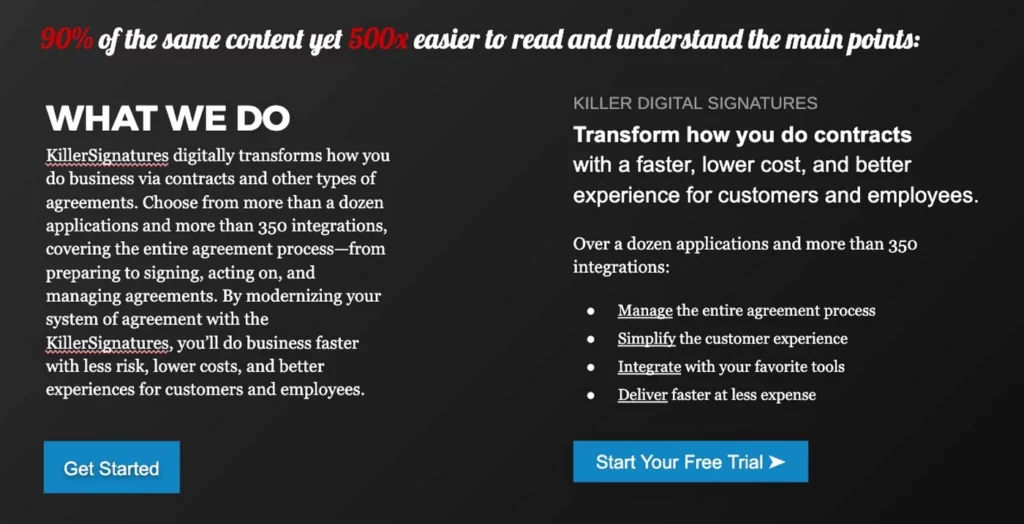
Ensure a 14px font size as the minimum for content readability. With larger font sizes, be mindful that longer lines result, necessitating a proportional adjustment of line height for equilibrium. Leverage tools like GRT calculators to establish the ideal line height based on the golden ratio (1.618).
Concerning line length, maintain it within 50-75 characters for optimal readability. Straying beyond this range, whether shorter or longer, can compromise the legibility of your online content.
If achieving an overall short line length proves challenging, employ a subtle yet effective technique to enhance the reading experience and, consequently, dwell time: Condense the introductory section of your text compared to the rest.
Additional Tip: Integration of Half-Wide Images:
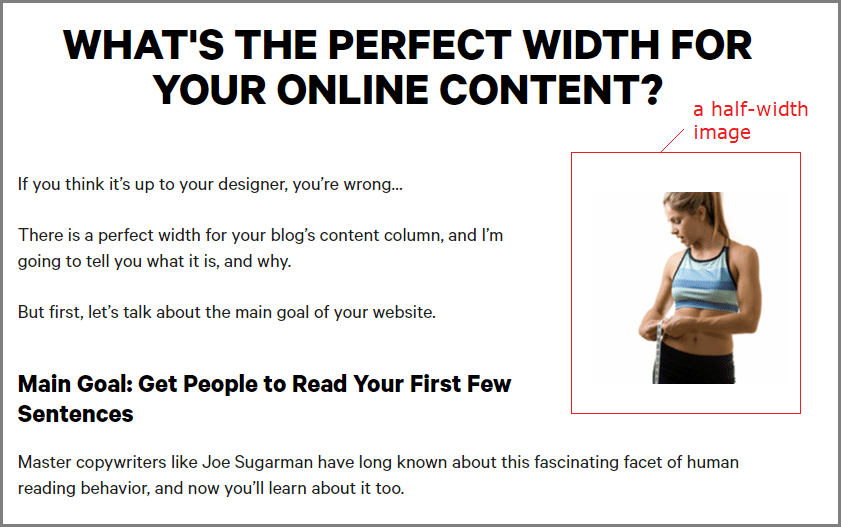
Complementing Readability with Visual Elements:
- Including half-wide images strategically beneath headlines serves as a visual cue, breaking up the text and providing readers with points of interest.
- Visual elements not only enhance engagement but also contribute to a more visually appealing layout, making the content more inviting and accessible.
3. Enhancing Flow with Bucket Brigades:
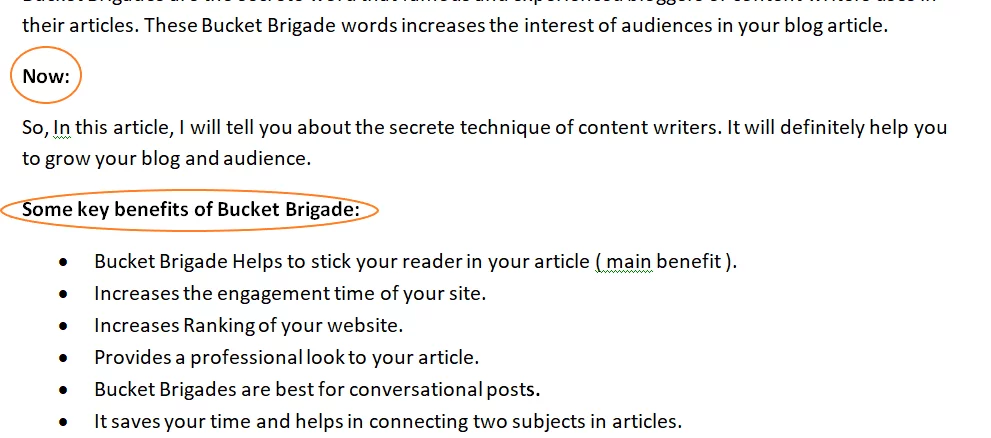
magine a time before fire trucks and hoses when firefighters relied on passing buckets of water in a chain. Just as it was crucial to keep the water flowing smoothly, content writers use “bucket brigades” to ensure a seamless transition from one paragraph to the next.
Purpose of Bucket Brigades:
These transitional phrases, akin to the buckets in a chain, serve several important purposes:
a. Connecting Ideas:
- Linking ideas and arguments in content to create a cohesive narrative.
- Ensuring a continuous flow that prevents readers from disengaging.
b. Eliciting Curiosity:
- Provoking curiosity among readers, encouraging them to stay engaged.
- Creating a desire to delve deeper into the content for more insights.
c. Improving Readability:
- Establishing rhythm in the text for a smoother reading experience.
- Offering brief resting points for readers while maintaining momentum.
Choosing the Right Phrases: Wondering how to select the most effective bucket brigade phrases? Consider exploring Rob Powell’s curated list at SmartBlogger or refer to the tried-and-true 502 transitions by Write Online for inspiration.
4. CTA
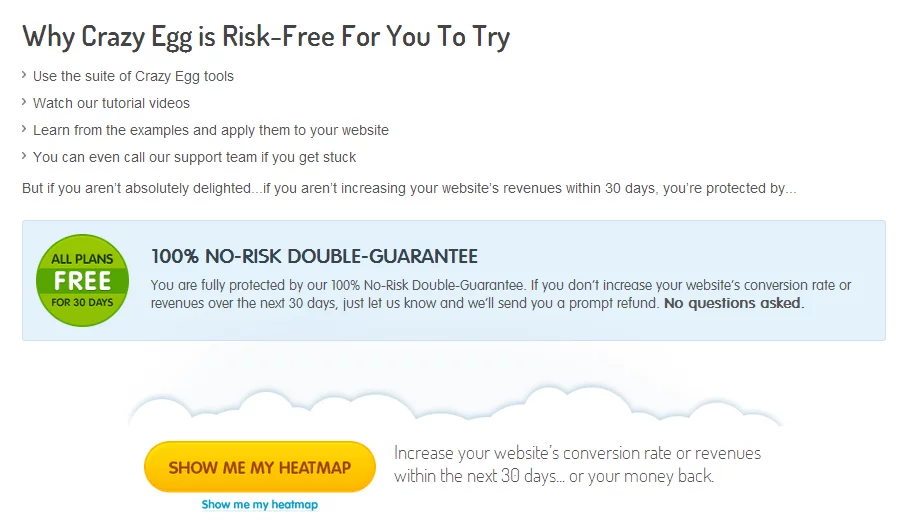
In content optimization, the placement of calls to action (CTAs) plays a pivotal role in influencing user behavior and dwell time. Traditionally, CTAs are positioned at the conclusion of content assets, providing a directive for readers’ next steps. However, this conventional approach presents a challenge – visitors may exit the page before encountering the CTA, limiting its impact on dwell time.
A strategic solution involves a paradigm shift in CTA placement:
- Early Introduction of CTAs: Instead of confining CTAs to the conclusion, consider introducing them early in the content. For example, presenting a bonus incentive towards the end creates anticipation, motivating readers to delve deeper.
- Strategic Mid-Content CTAs: Experiment with placing unique value propositions in the middle of your content. Design these mid-content CTAs for heightened visibility during scanning, ensuring users take notice.
- Interactive Elements: Elevate engagement by integrating interactive elements alongside CTAs. Appeal to social instincts with features that prompt user participation, enriching the overall user experience.
The key lies in striking a delicate balance between visibility and relevance when experimenting with CTA placement. It is essential to capture reader attention without disrupting the organic flow of the content. Moreover, tailor CTAs to seamlessly align with content dynamics, ensuring they complement the user experience and contribute to prolonged exploration.
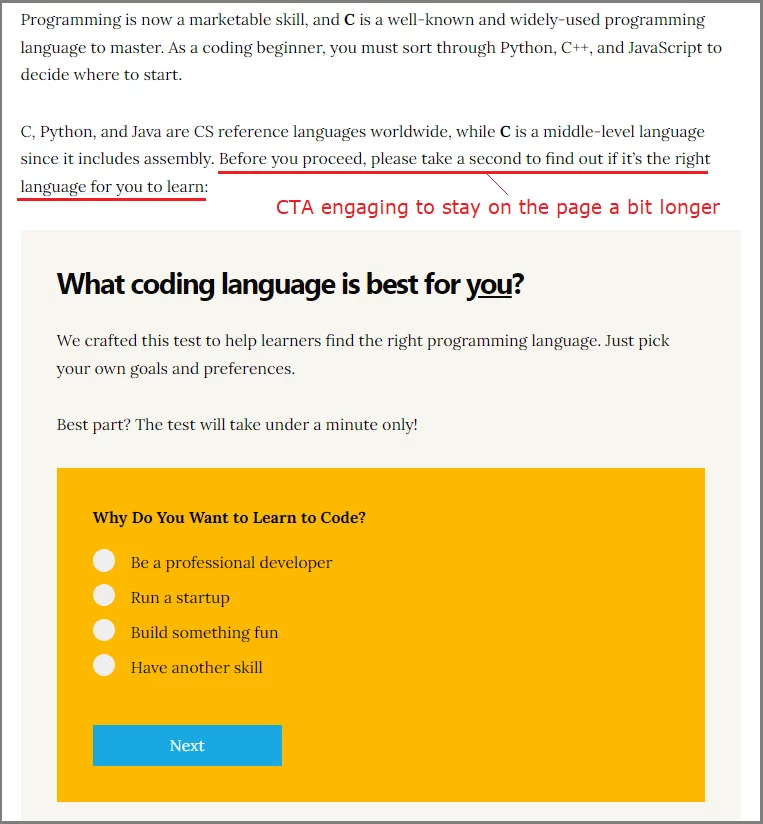
By strategically situating CTAs at various points within your content, you not only enhance visibility but also create opportunities for increased user engagement and extended dwell time.
5. Content Length
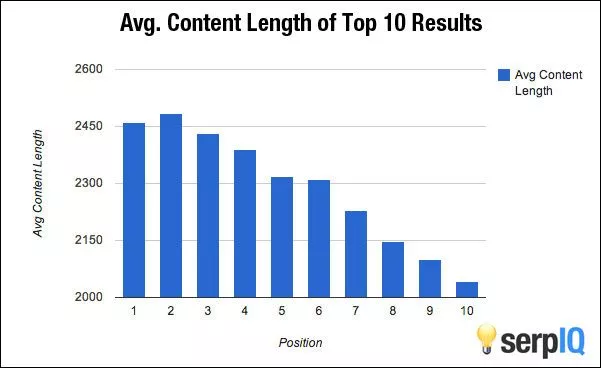
The length of your content holds a strategic significance, particularly when it comes to blog posts. The logic is straightforward – comprehensive, data-driven, long-form articles are encouraged. The rationale behind this approach is grounded in the premise that more content on a page translates to increased engagement, leading to extended dwell time.
Furthermore, the advantages of longer content extend beyond mere user engagement. Longer articles inherently cover a broader spectrum of keywords, contributing to enhanced visibility and the potential to rank for multiple search terms.
However, a crucial caveat surfaces – content length alone does not suffice. Quality emerges as the determining factor, a principle underscored by the evolving landscape of SEO trends in 2024. The emphasis on E.E.A.T. (Expertise, Authoritativeness, Trustworthiness) underscores the pivotal role of unique, user-centric content.
The landscape is evolving, driven by the surge in AI-generated texts across diverse niches. As a response, numerous AI detectors have emerged, with websites explicitly stating their intent to scrutinize contributions for AI presence. Job opportunities for content writers increasingly emphasize the exclusion of AI text generators from the creative process.
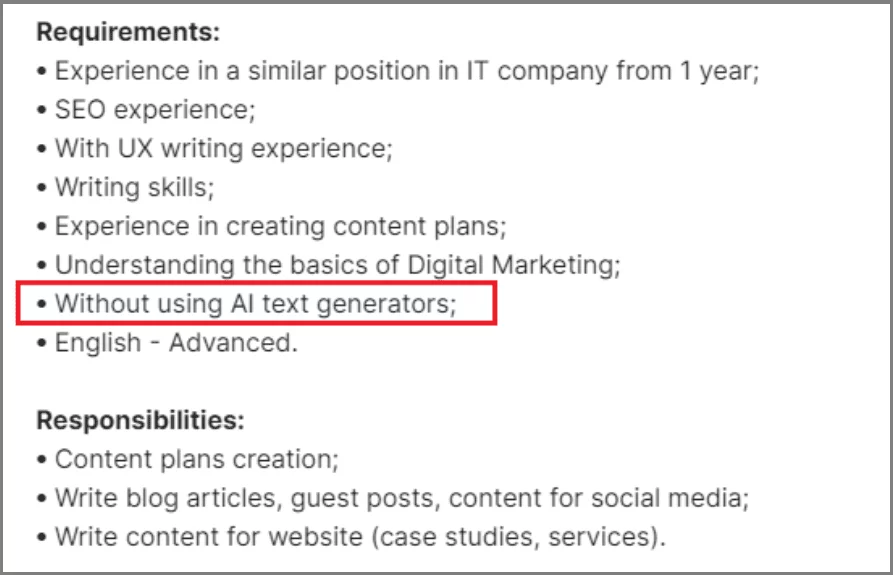
A supplemental tip for those crafting list posts is to structure the content strategically. Commence with the most unique tip, followed by essential insights, and culminate with distinctive tips once again. This strategic arrangement caters to user expectations, fostering sustained engagement by offering novel insights throughout the scroll.
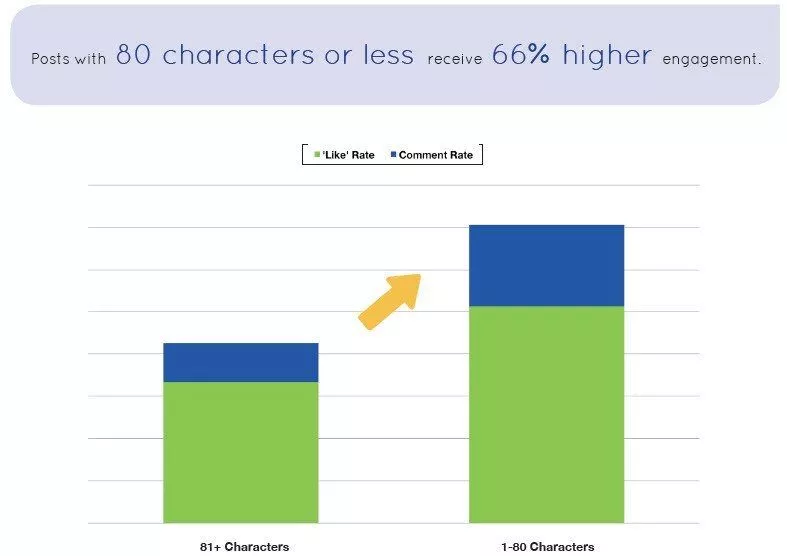
Ultimately, the pursuit of originality and value remains the linchpin, ensuring that your content not only captivates the audience but also provides meaningful, enriching experiences that resonate with evolving user expectations.
Learn about SEO algorithms here.
6. Customized Visual
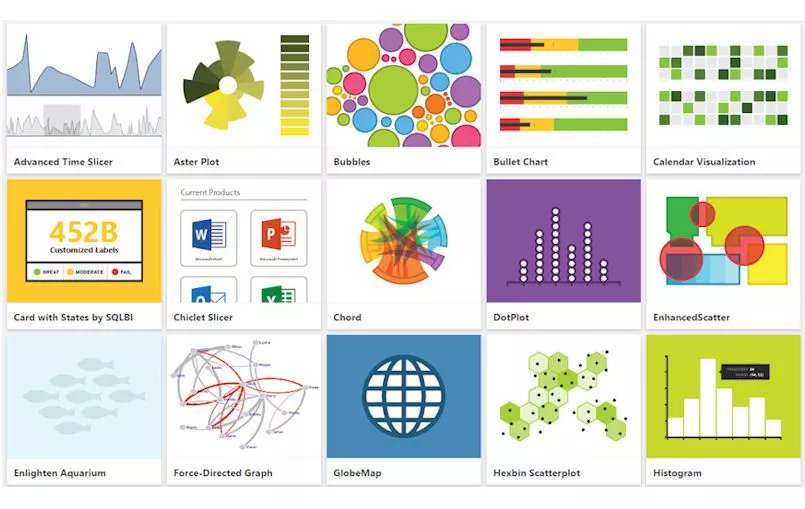
Harnessing the power of custom visuals and tools is pivotal, recognizing that the majority of individuals are visual learners, with the human brain processing images 60,000 times faster than words. Elevating the impact of visual content on your webpage involves steering clear of generic visuals sourced from royalty-free collections such as Unsplash or Pexels. Instead, opt for crafted custom visuals that add substantial value—screenshots, graphs, tables, infographics, and more.
This strategic choice is not without purpose:
- Enhanced Visibility in Google’s Featured Snippets: Custom visuals significantly enhance the likelihood of your content being featured in Image Packs within Google’s Featured Snippets, thereby amplifying your online visibility.
- Stimulating Shares and Backlinks: Unique visuals serve as shareable assets, with mentions of your content acting as a source, fostering organic backlinks. This not only fortifies your online presence but also contributes to the growth of your backlink portfolio.
- Augmented User Experience and Engagement: Custom visuals contribute to a richer user experience, prompting visitors to delve into them in detail. This engagement translates into prolonged dwell time on your webpage.
Expanding beyond static images, the inclusion of videos or interactive elements further enriches the user experience. Quizzes, carousels, calculators, calendars, and interactive maps are potent tools that captivate users, exerting a considerable influence on dwell time and reducing bounce rates.
7. Internal Linking

In tandem with visual elements, a strategic approach to internal linking serves as a linchpin in content optimization. The emphasis lies in incorporating click-worthy internal links within your webpage. This not only keeps visitors engaged by encouraging exploration of other pages but also disrupts the conventional route back to Google SERPs.
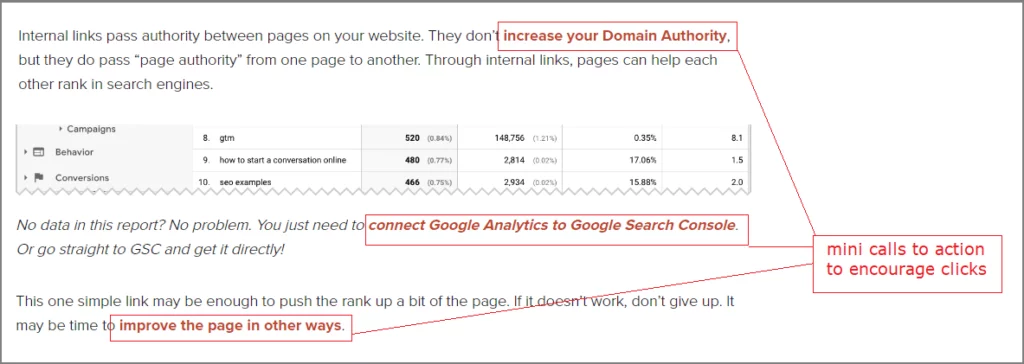
The benefits of agile internal linking are two-fold:
- SEO Optimization: Effective internal linking facilitates visitors spending more time navigating through a website, thereby passing authority between pages. This dynamic interlinking strategy mitigates the risk of weak user signals that could impact SEO rankings.
- Strategic Placement and Design of Links: To maximize the effectiveness of internal links, visibility is paramount. Many websites overlook the importance of emphasizing links within content, resulting in users overlooking clickable opportunities. Crafting each link as a miniature call-to-action (CTA) further compels users to click, ensuring that the internal links seamlessly guide them to relevant content, thereby fostering a cohesive and immersive user experience.
Conclusion:
dwell time optimization is a dynamic and multifaceted approach that requires a holistic understanding of user behavior and content relevance. By implementing effective strategies and continuously analyzing metrics, website owners can create an environment that not only satisfies users but also aligns with the ranking algorithms of search engines. The result is a win-win scenario – improved user satisfaction and enhanced search engine performance.
FAQs on Dwell Time Optimization:
Can dwell time be measured for individual pages?
Yes, dwell time can be measured for individual pages using web analytics tools. These tools provide insights into how long visitors stay on specific pages, helping you identify areas for improvement and optimization.
Is there an ideal dwell time that websites should aim for?
There’s no universal ideal dwell time, as it varies based on factors like content type and user intent. Focus on improving dwell time relative to your website’s average and industry benchmarks. The goal is to provide a satisfactory experience that meets users’ needs.
Can dwell time be improved through mobile optimization?
Yes, optimizing your website for mobile devices is crucial for improving dwell time. With a growing number of users accessing websites from mobile devices, ensuring a responsive design and fast loading times on mobile can significantly enhance the overall user experience and dwell time.
Are there specific content formats that tend to increase dwell time?
Long-form articles, in-depth guides, videos, and interactive content formats are known to increase dwell time. These formats provide valuable information and keep users engaged. However, the effectiveness may vary based on the nature of your content and target audience.



